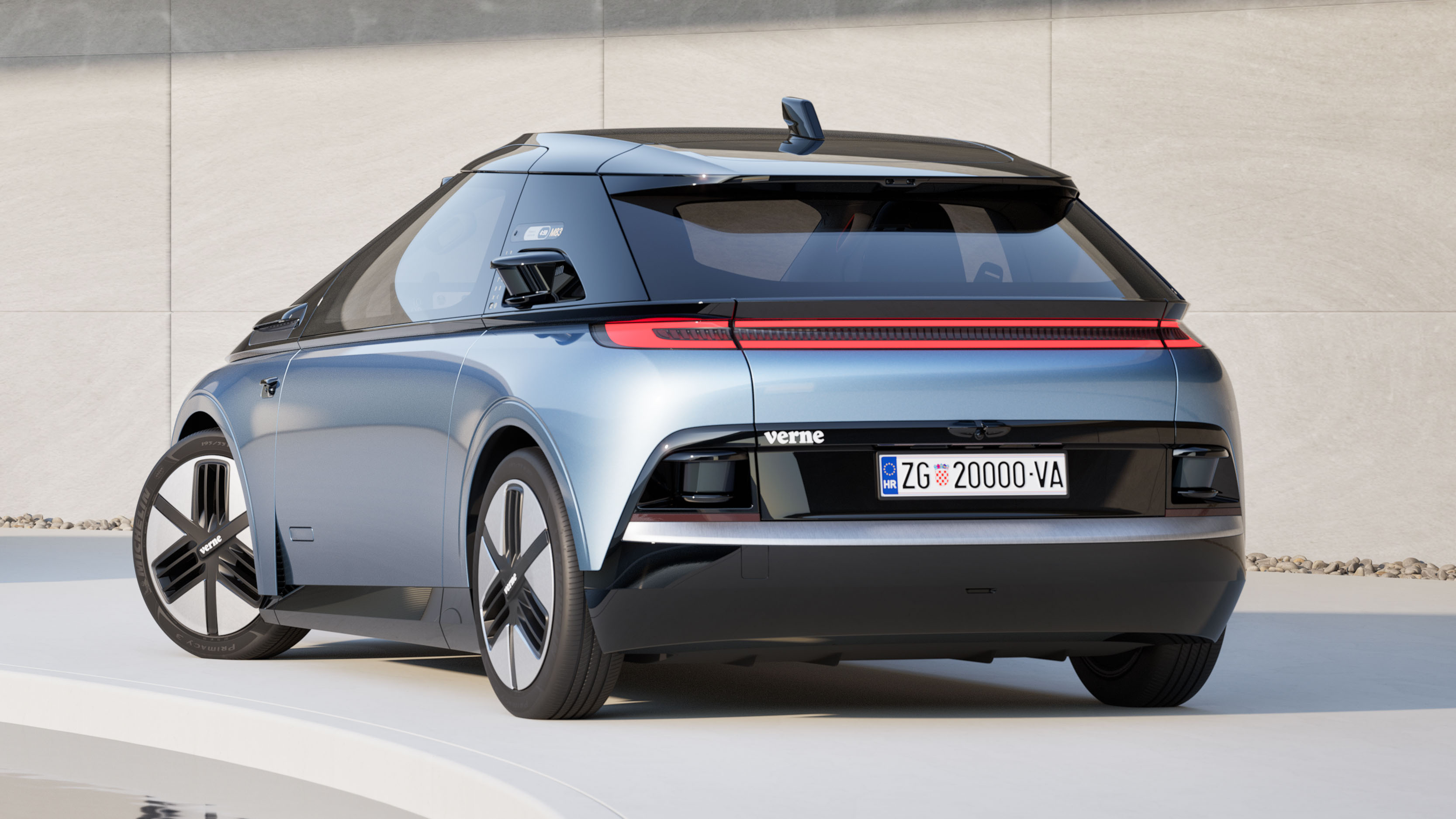
THE VERNE CONCEPT: HERE’S YOUR FIRST LOOK AT MATE RIMAC’S DRIVERLESS ROBOTAXI
What does a driverless future look like in the eyes of a person that’s responsible for some of the fastest electric cars on the planet? Well, the Verne concept is a start, since it’s been created by a consortium part-led by none other than Mate Rimac.
The idea is that this Johnny Cab-esque pure EV will work alongside a unique app and purpose-built infrastructure to form an ‘ecosystem’ to power cities of the future. And that future could be as early as 2026, which is when Rimac and his group are planning to roll out the very first models and set their course for world dominion.
The car will be built entirely ‘from the ground-up’ upon a new type of free-flowing platform, placing a strong emphasis on safety and comfort. Not such a strong emphasis on what you might call 'control mechanisms'. Because there's no steering wheel. Or pedals, for that matter. So it really is all trust here. But before you start hyperventilating, Verne has partnered up with a brand called Mobileye to supply the autonomous tech.
Mobileye, for some perspective, has been working on developing its AI’s capabilities over the last few years, and comprises a set of cameras, numerous radars and lidar to allow vehicles to scan and react accordingly to situations. It’ll also factor in weather conditions and local driving styles, says Verne. Wonder if that’ll account for Audi drivers, too.
The vehicle itself will be a two-seater, since research suggests around 90 per cent of car journeys contain, at most, two occupants. But mostly, this is being done to maximise the amount of interior space occupants can have; just imagine how much cooler your Honda Jazz would be if the back seats were ditched and a pair of swivelling wingbacks were thrown in? Better still, Verne will equip its concept with Peugeot 1007-esque sliding doors to make entry and exit that little bit easier.
But unlike the 1007, the interior won’t quite bore you to death. That’s because it’s aiming to be less a car and more a living space. Gone is the conventional dashboard and in its place will rest a huge 43in display and 17-speaker audio set for you to watch your favourite robot apocalypse movies.
Verne also says something called a ‘Halo Ring’ will be positioned above you, which ‘enables new views of cities’. Clearly, the idea of tilting your head upward about 80 degrees is something unheard of at the brand.
Let’s touch briefly on the exterior design, which is… shall we say ‘uniquely proportioned’. The first thing you’ll spot is the massive front window slab, while Verne has ditched the use of wind shield wipers and traditional wing mirrors. To be honest, we're all for an updated take on the classic Total Recall aesthetic.
Something else that's quite cool is the app, because users will be able to tailor their experience before the vehicle arrives at a given pick-up point. From seat comfort settings and interior mood lighting, to temperature and even scent options (huh?), Verne says it wants you to feel like you own the vehicle each time you get in. Even though you don’t. Good idea, that.
Let’s finish up with the infrastructure: Verne says every city will have a specialised area called the ‘Mothership’, where each vehicle will return for inspection, maintenance, cleaning and charging. It’ll act as the primary hub for Verne in each occupational city, and doesn’t at all make it sound like Mate Rimac is planning global domination.
Once the roll-out procedure kicks off in Croatia by 2026, Verne will look to make introductions to Britain and Germany, before flocking toward the Middle East.